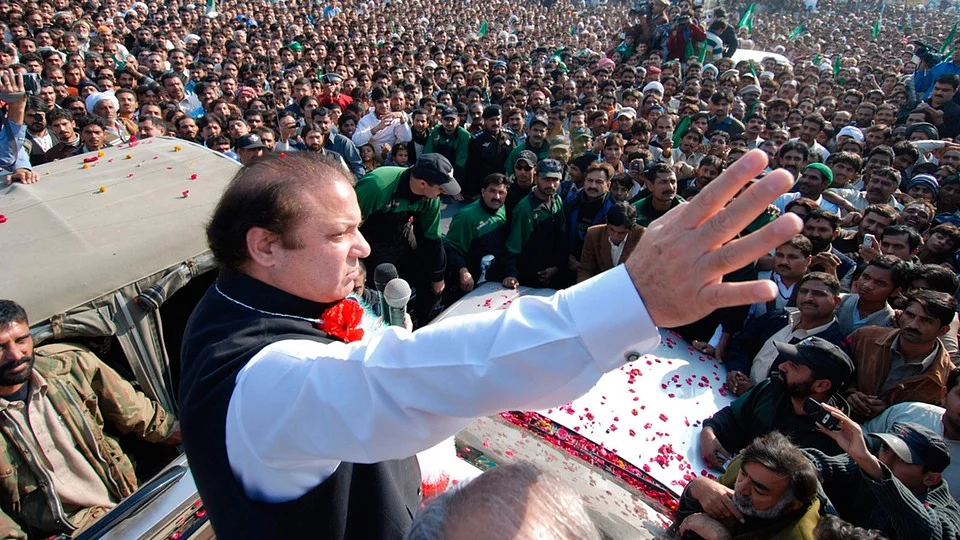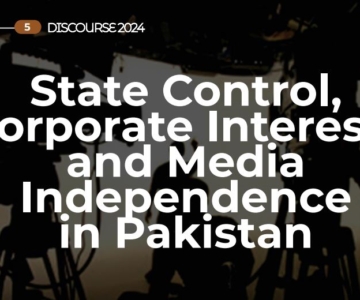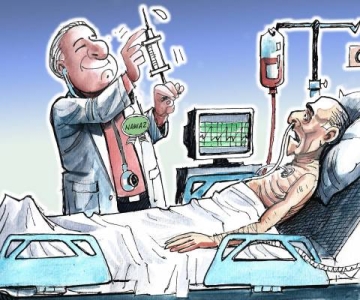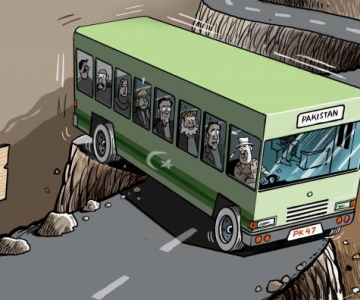The disqualification of Nawaz Sharif through a controversial court verdict was the easier task. Reining in his support and ousting him from the political arena has been altogether tougher. There are fundamental shifts that have occurred in Pakistani society that partially explain why this is happening.
The principle contradiction, to borrow an outworn phrase, in Pakistan’s political history has been the permanent and dominant post-colonial state inhibiting and even thwarting the space for representative institutions. Since the 1950s this has been a regular feature of political contests and their varied outcomes. The four military coups, hanged, ousted or murdered politicians and shaping of anti-democracy public narratives have, time and again, illustrated this syndrome.
Since the last coup launched by the General Musharraf-led junta, Pakistan has undergone distinctive changes thereby dispersing the power held by civil-military bureaucracy. Ironically, many of these power-shifts started to shape up under the Musharraf regime. The expansion of Pakistan’s economy especially the service sector and increased remittances, among others, led to unprecedented growth in middle-class households. Estimates point out that 42 percent of the country’s population comprises upper- and middle-classes, with roughly 38 percent falling in the middle-class category. This shift is nothing less than tectonic and exhibits itself in the political noise. While middle-class politics is not always progressive, it’s quest for increased voice and preservation of its class interests — ‘anticorruption’, functional services and good governance especially property rights — is increasingly being articulated through the contests between the PMLN and PTI and the media industry itself.
Encouraged by charged public rallies Nawaz Sharif has been relentless in pitching himself as the new anti-establishment figure. For the first time in post-1971 history, Sharif-directed anti-establishment mood finds traction in military’s bastion; the Punjab
Since the anti-Musharraf movement spearheaded by lawyers and later judges, the judiciary is a far more empowered player in the power-matrix. For now it may appear to be in alignment with the military’s worldview, the absolute dominance of the latter is a story of the past. This is why constitutional suspensions and deviations are no longer easy to implement. Getting Sharif out was not that simple either. It took many years and finally was only able to happen when the judiciary was willing to oust him on technical grounds. Such intra-state contests are enablers of a less authoritarian environment that has historically defined Pakistan’s political scene. Even though the judges have not harmed any of the military’s vital interests, the very fact that they decreed against the gerrymandering by the military-intelligence establishment in the Asghar Khan case and indicted a former Army chief — Musharraf — indicate new beginnings that cannot be ignored. The hold of Pakistan’s military over politics and shaping the country’s discourses will not go away for some time to come but its monopoly over power is diminishing. This space is what enables Sharif to strike back.
The formation of new elites during the last two decades or so is also noteworthy. Property tycoons such as Malik Riaz and Aleem Khan — and their numerous local variants — typify crony capitalism, and their involvement in political affairs has grown exponentially. Political parties, as well as both the military and media benefit from this new money; thereby increasing their leverage over the system. While these new elites are subsidiaries of the ‘old’ order, not necessarily democratic, their involvement further distributes power and dilutes the historic dominance of the civil-military bureaucracy and their ‘old’ allies.
The expansion of the media industry since the early 2000s is a well-known story. Its sustenance is also linked to increased middle-class power. The advertising revenues have also been on the up. In 2015-2016, the total revenues were Rs. 76.2 billion ($727 million). Half of this supported television channels while the rest was divided among print, outdoor, radio and digital media. Perhaps more remarkable has been the rise of new media technologies altering the nature of public conversations. While TV was more pliant, Sharif supporters — led by his daughter — took to social media to vent their anger at his disqualification. Such has been the campaign that senior judges had to resort to public defence of their decisions, which resulted in stirring up more controversy while appearing on the back foot. New media are also divisive and polarising but they have been able to push the boundaries of traditional media. Public anger over Zainab, the missing bloggers, Mashal Khan’s murder was articulated through social media forcing the government to act.
The traditional establishment is also wary of the growing power of new media. The latter’s reach is expanding each day through cellular technology and the public conversations within Pakistan are more global than ever. On balance, this has been a boost for democratic expression and displaying that no matter how regressive political beliefs of urban social media users are, they are unwilling to compromise when it comes to freedom of expression. The state’s consistent crackdown on dissent aired by new media only indicates that this is a threat. New media have also introduced a modern version of political assembly and Nawaz Sharif’s daughter Maryam has cleverly exploited this.
Encouraged by charged public rallies, Nawaz Sharif has been relentless in pitching himself as the new anti-establishment figure. Sceptics argue that this posturing might change the moment that the military brokers a deal of sorts. But in this contest, a new phase of politics is unfolding. For the first time in post-1971 history, Sharif-directed anti-establishment mood is finding traction in military’s bastion; the Punjab. Sharif did not even shy away from citing the case of Shaikh Mujeeb who led East Pakistan into a war of liberation. While Sharif’s position may be opportunistic, it is important for a Punjabi leader to remind his constituents that Mujeeb was not a villain but a ‘patriotic’ victim-gone-astray due to the military’s excessive interference in national politics.
The major opposition parties despite their willingness to play the post-Sharif engineering game seem unprepared to participate in an extra-constitutional future. A long-term caretaker government to fix corruption and democratic ills therefore faces the uncertain endorsement by Supreme Court and the opposition parties. Even the hydra-headed media will not be fully on board. The largest private television channel is not in sync with the military-judiciary establishment. Short of total censorship, this will not work.
Finally, the increased pressure by the United States, Afghan government and, by extension India, have slowed down the final phases of the get-Nawaz-out-again project. This was not entirely unexpected but President Trump’s January tweet and aid-cuts have created a little more wiggle-room for Sharif’s brand of politics. For instance, he feels vindicated by what was reported on civil-military discord via the infamous Dawn Leaks.
As an experienced player of power politics, Sharif knows all of this and that’s why his tone has grown belligerent with time. The Supreme Court has responded by accelerating contempt proceedings but even here the Court is on a weak footing. For it has to punish the clerics who abused judges and do something about the former dictator who has avoided his trial thus far.
In short, the country is changing faster than many had predicted. This has opened up newer possibilities for democratic contest and rebalancing of political power. Nawaz Sharif may be out for now but it is not going to be a smooth ride for his opponents either.
Published in Daily Times, FEBRUARY 4, 2018: The dynamic political scene confirms a fast changing Pakistani society



